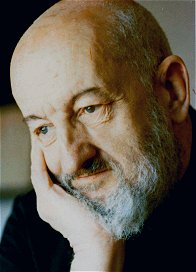Sixties
City presents
a wide-ranging series of
articles on all aspects of the Sixties, penned by the creator of the iconic
60s music paper Mersey
Beat
|
Sixties
City presents
a wide-ranging series of
articles on all aspects of the Sixties, penned by the creator of the iconic
60s music paper Mersey
Beat
|
|||||
|
 |
There
was a counterculture in Britain during the Sixties which included interest
in Indian spirituality and mysticism. Books such as 'Siddartha', (about
the Buddha) and Indian religious books like 'The Upanishads'. There was
also, due no doubt to The Beatles, the transcendental meditation practised
by the Maharishi Mahesh Yogi and the Indian music of Ravi Shankar. Interest
in the spiritual had already arrived earlier in the UK with the publishing
of 'The Third Eye' by Lobsang Rampa which sold 500,000 copies in two years.
This was his first book, published in November 1956, which was an autobiographical
history of his life in Tibet during the time of the 13th Dalai Lama. Rampa
followed with a series of books about Tibetan life, spiritual enlightenment,
and mysticism, with themes such as astral projection, predictions of the
future, future wars, crystal gazing, aura deciphering, the lost years of
Jesus and meditation. 'The Third Eye' depicted Rampa entering the Chakpori Lamasery in Tibet at the age of seven. He described how a small hole was drilled into his forehead to open his third eye and arouse powers of clairvoyance, see auras and develop spiritual energies. He even claimed to have seen a mummified version of himself from a previous incarnation and witnessed a Yeti. He then entered a temple of Tibetan medicine under the tutelage of Lama Mingyar Dondup, was certified as a medical priest at the age of 12 and at the age of 16 he was promoted to Lama. The Dalai Lama then requested that he leave Tibet and go to China where he joined a medical college. When the war with Japan began he became the pilot of an air ambulance but was shot down and taken to a prison camp near Hiroshima. On the day the bomb dropped on the city he escaped, stole a fishing boat and went aground on the Asian mainland near Russia. In 1948 he moved to Bayswater in London having shaved his head and re-named himself Kuan-Suo. Despite the huge sales and interest in Tibetan philosophy there were doubts about the accuracy of his accounts of Tibetan life. These were brought up by Tibetologist Heinrich Harrer, Austrian author of 'Seven Years in Tibet'. Harrer had been a member of the SS and was captured by the British but escaped and fled to Tibet. He considered Rampa's description of life in Tibet was inaccurate and hired Clifford Burgess, a leading Liverpool private detective to investigate Rama. In January 1957 Scotland Yard requested that Rama produce his Tibetan passport resident permit, which caused Rama to immediately move to Ireland. Burgess discovered that Rampa was actually Cyril Henry Hoskin, a former plumber from Plympton in Devon, who had been born in England on 8th April 1910. He'd moved to London in 1940 and worked as a surgical fittings manufacturer and had never been to Tibet. Hoskin explained his knowledge of Tibet by relating that one day he had damaged his back when he fell off a tree when owl-spotting. He claimed that while he was semi-conscious below the tree that afternoon, half strangled by his binoculars, an elderly Lama had floated by on the astral plane and they both agreed to swap bodies. Rampa/Hoskin moved to Canada in the Sixties with his wife San Ra'ab and in 1973 they became Canadian citizens. He passed away in Calgary, Canada, at the age of 70 on 25th January 1981. |
|
Article
Text
UK
web hosting by
|